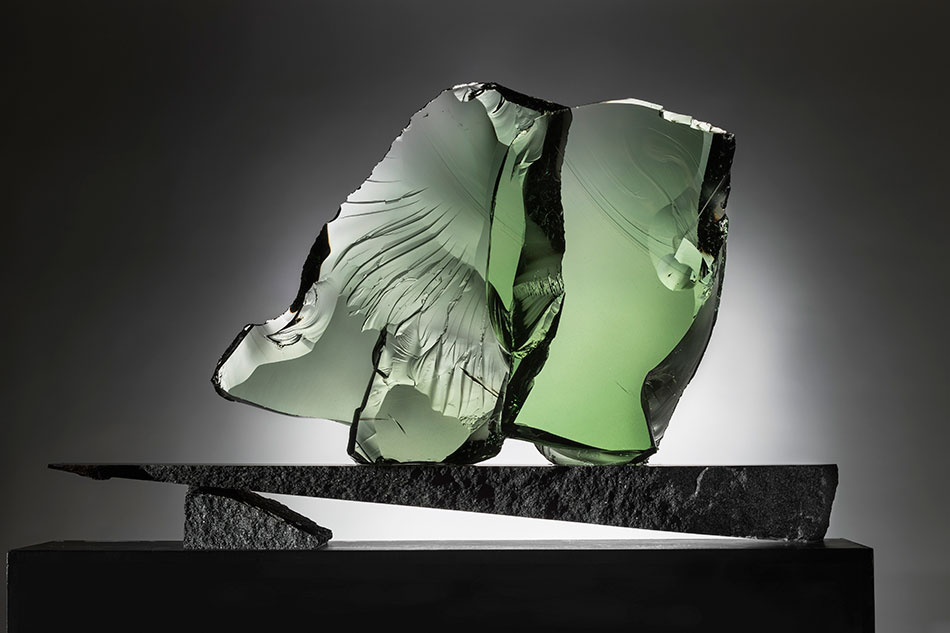
This glass sculpture was made in 1985 for Iittala.
Image courtesy of: 1st Dibs, photographed by: Rauno Traskelin
Timo Sarpaneva was somewhat of a star in Finland, and abroad… he was well-known as an influencer for decades. Here’s how this “Golden Boy” came to notoriety…
A graduate of graphic design, it was in 1951 that he submitted a unique entry at the Milan Triennial, an embroidered coffee cozy. The coffee-drinking Italian judges were curious about the cozy… however unclear about its purpose. After deliberation and an explanation, Sarpaneva won a silver medal. There was the start to his illustrious career.
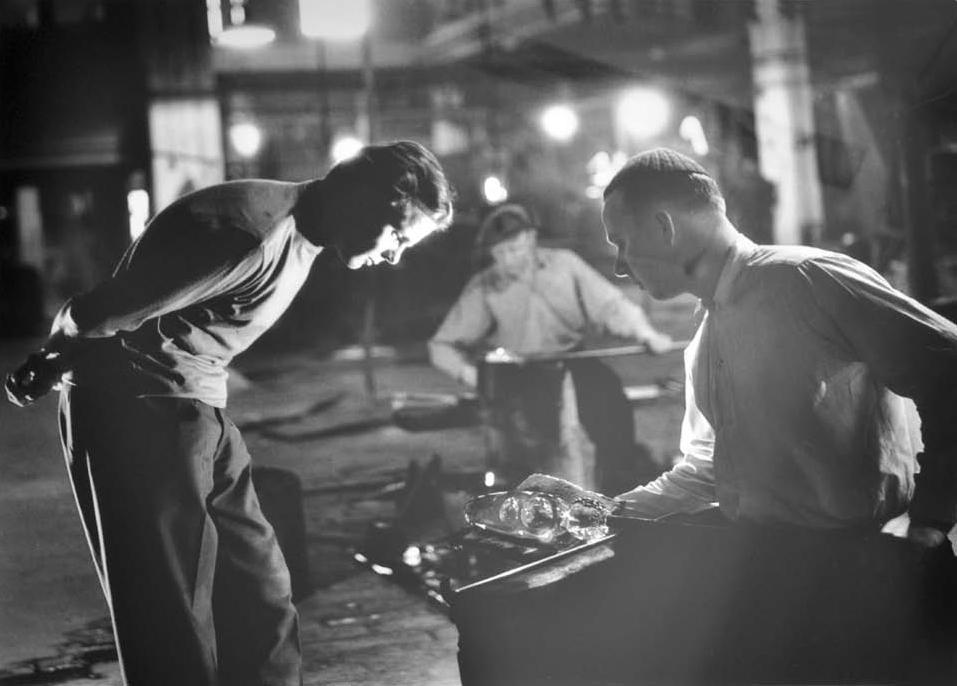
In 1954, at the Iittala glass factory alongside Helge Nieminen. His unconventional and non-traditional wet-stick method is on display in the photograph.
Image courtesy of: Wikipedia
Two years of glassmaking experimentation followed as Sarpaneva tried to push the old, wet-stick technique into the present. In the past, glass was blown to form a shape… Sarpaneva formed a bubble INSIDE the molten glass; in essence, creating the design from within.
Along with his fellow countrymen, Sarpaneva won so many Grand Prizes in everything from textiles to utilitarian glass and architecture that other, non-Finnish designers began to tag them as the “Finnish Mafia”. Regarding that claim Sarpaneva said, “There was no mafia. In Finland, there was a great yearning for beauty after the war and suffering.”
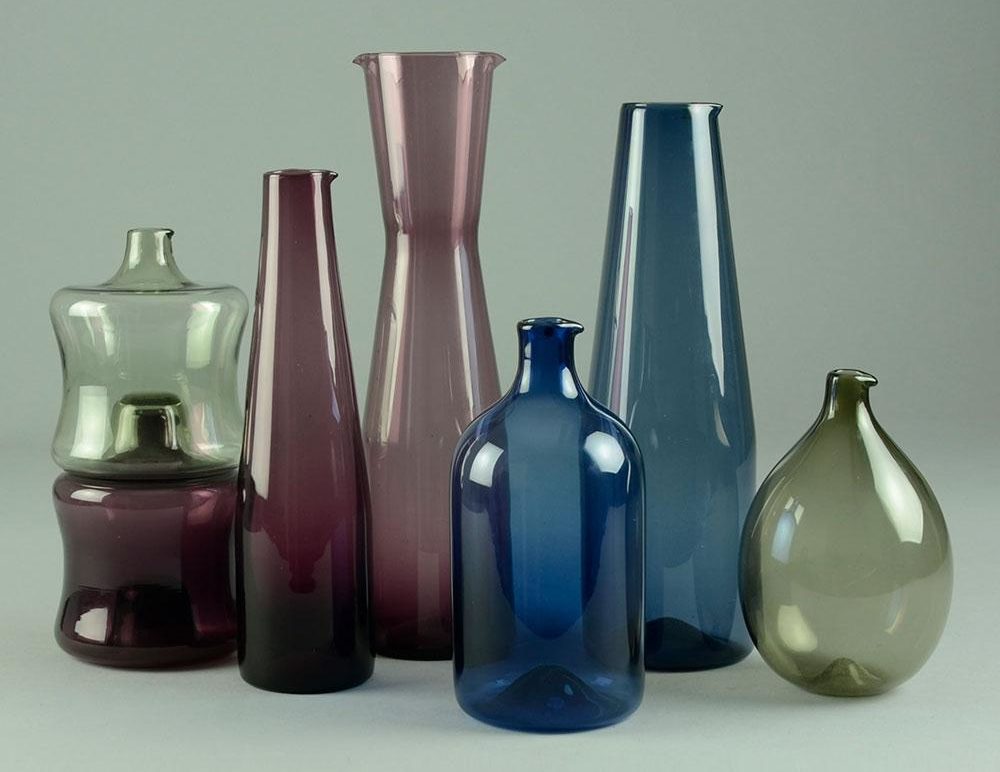
Seven i-glass colored decanters, created for Iittala. All of the pieces in this display were produced in the 1960’s and range in height from 5 1/4 – 12 7/8 inches.
Image courtesy of: Free Form NYC
In 1950, Sarpaneva got his first job at Iittala and it was here that he made a name for himself as a glass designer. He designed colored drinking glasses and beakers for the “i” Collection. The boxy, lowercase “i” that he created, sits at the center of a red circle remains the company’s logo to this day.
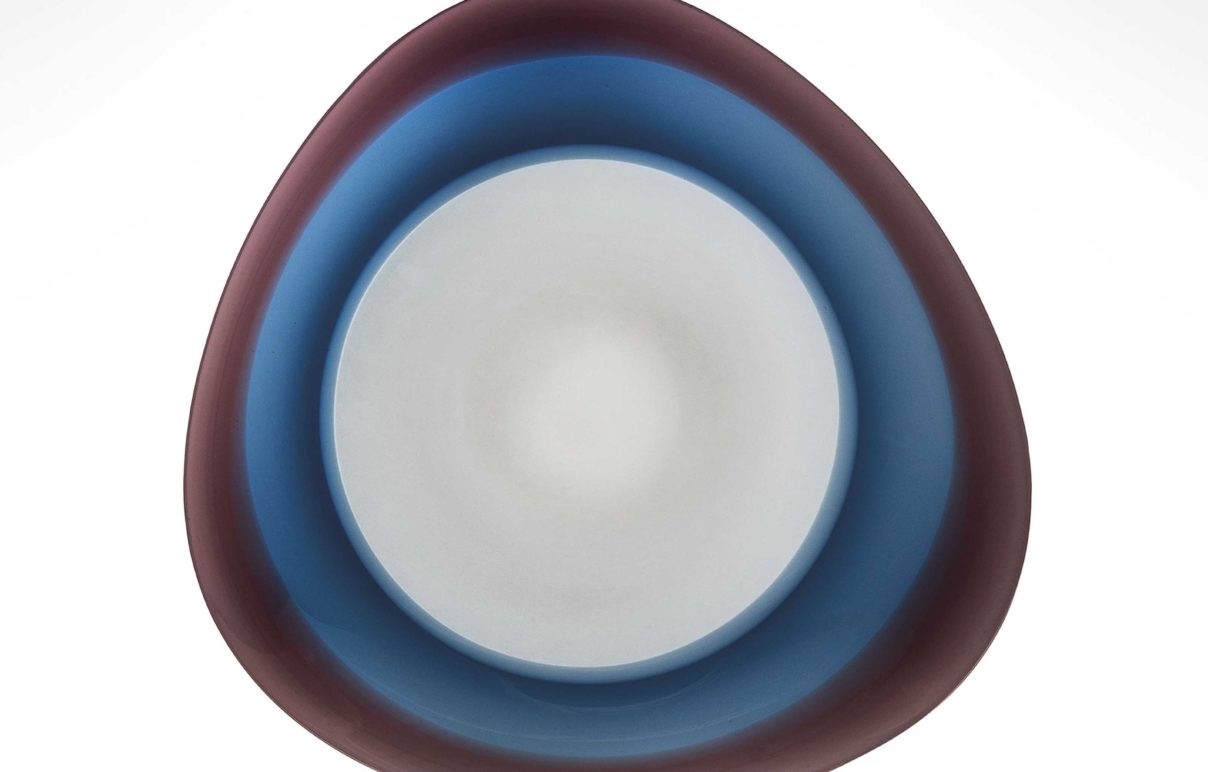
“Shadow of Water”, 1956.
Image courtesy of: Christie’s
So much of Sarpaneva’s inspiration came from his childhood visits to his grandparents in the 1930’s. Everything was made by hand in this non-cash economy. Skilled craftspeople were valued and everyday objects were respected and appreciated.
After the war, Finns began moving to cities and brought along with them their love for all things handmade and carefully crafted. It was then, in the 1950’s, that the modern, nature-inspired designs starting changing the workplaces and homes in Finland… and eventually, of the world!
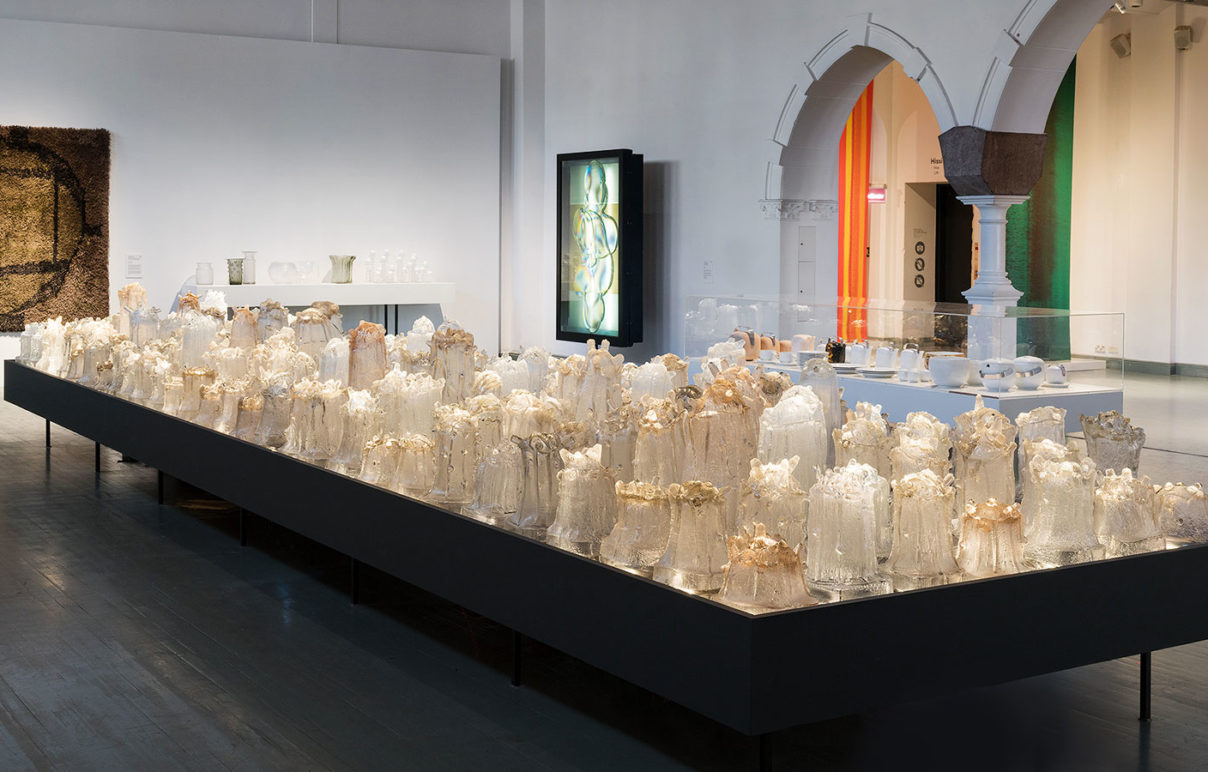
This installation was made for Expo 67 in Montreal.
Image courtesy of: 1st Dibs
At the “Timo Sarpanova” exhibition in Helsinki over the summer, perhaps the most impressive piece is “Park Ice”. The 7 x 30 foot installation is half of the original (the other half is patiently waiting in storage). The long table is covered with 210 largely rectangular and colorless glass objects. Traditionally, wood molds are soaked before the molten glass is poured in and then, the steam generated serves as protection for the wood at the intense heat. However, Sarpanova eliminated the water and thus, the molds burn “creatively” and irregularities are transferred to the glass. It’s truly a magical piece… and method!